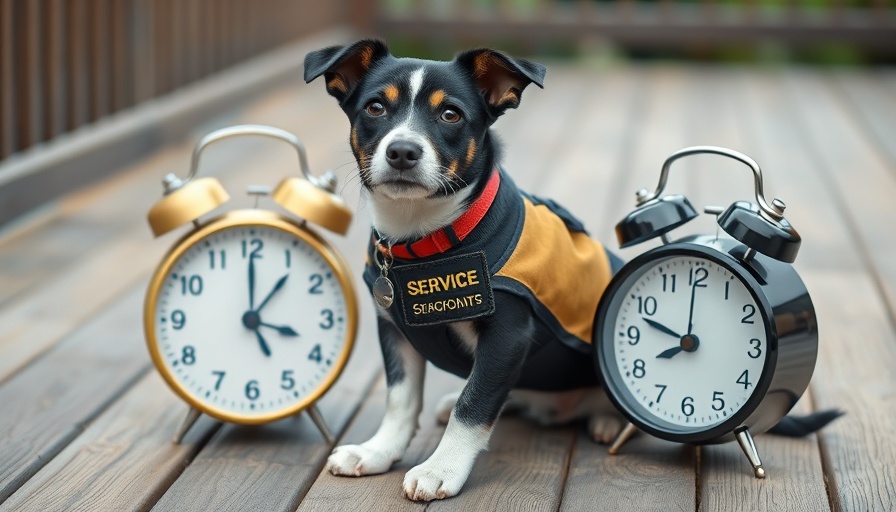
The Challenges and Rewards of Owner Training a Service Dog
In recent years, the movement towards owner training service dogs has gained significant traction among those living with disabilities. This trend reflects a growing awareness of the need for personalized support, allowing individuals to train their dogs to suit their unique needs. However, while this path offers autonomy and control, it comes with its own set of challenges and emotional hurdles.
The Emotional Rollercoaster of Owner Training
Many owner-trainers report feeling the weight of immense responsibility as they navigate the complex interplay of training and emotional investment. As highlighted by Cooperative Paws, owner-trainers can often feel pressured and burned out, faced with the dual challenge of training their dog while managing their own disability. This intricate balance can lead to feelings of inadequacy, especially when training setbacks occur. When a dog experiences behavioral issues, it is easy to see this as a personal failure rather than recognizing it as a natural part of the training process.
Setting Realistic Expectations: Understanding Dog Development
To mitigate some of these struggles, trainers must emphasize realistic expectations from the beginning. According to insights derived from articles by the Psychiatric Service Dog Partners (PSDP) and The Exceptional Sidekick Service Dogs, understanding canine development stages can alleviate potential stress. For instance, many handlers are caught off guard by their dog’s adolescence, a time notorious for behavioral ups and downs. Failure to recognize that all dogs mature at different rates can lead to frustration. Instead, trainers should clearly communicate that there will be periods of difficulty, and success will ebb and flow over time.
Incorporating Fun into Training
While service dog training is serious business, trainer advocates remind us that incorporating elements of fun can foster a more positive training experience. Engaging with the dog through playful activities not only creates an enjoyable space for learning but also strengthens the bond between the trainer and the dog. Gamifying the training tasks can transform stressful experiences into moments of joy, encouraging both the dog and handler to remain motivated.
The Importance of Community Support
The emotional strain on owner-trainers underscores the need for community and professional support. While trainers play a significant role, they are not therapists. When feelings of anxiety become overwhelming, they should guide handlers towards appropriate healthcare resources. Support networks, including local training classes and online communities, can provide valuable emotional and practical resources, enabling owner-trainers to share experiences, victories, and challenges.
Setting Achievable Goals: The Power of Small Successes
In this journey, setting short-term, realistic goals can prove beneficial. Some experts recommend engaging in fun training experiences that result in certificates, such as trick titles, providing a comprehensive sense of achievement for both handler and dog. By acquiring these small successes, owner-trainers can maintain motivation and see tangible progress, even during more challenging training phases.
Moving Forward: Emphasizing Personal Control
Ultimately, the decision to owner-train is deeply personal and requires individual assessment of various factors including time, financial resources, and personal commitment. Owner training not only rewards individuals with a trained service dog but can also empower them to develop a deeper understanding of their disabilities and how to manage them effectively. Programs that blend owner-training with professional guidance can bridge the gap, offering critical frameworks for success while maintaining the autonomy that owner-trainers cherish.
A Call to Action for Future Support
As we explore the realm of owner-training service dogs, it is essential to recognize the emotional and logistical challenges faced by trainers. By understanding these dynamics and advocating for more supportive programs that balance owner autonomy with professional assistance, we can foster an environment where both handlers and dogs thrive. Let us work together in creating community-based initiatives that will ensure informed and conscientious practices in service dog training.
 Add Row
Add Row  Add
Add 




 Add Row
Add Row  Add
Add 

Write A Comment